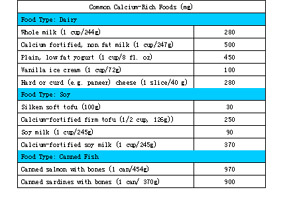 FROM Japan to India, from China to Korea, the number of fractures due to osteoporosis has risen dramatically over the last few decades. It is estimated that one in three women and one in five men over 50 years of age will experience a fracture due to thinning bones. In Europe, disability caused by osteoporosis is now greater than caused by cancers. In Singapore, the incidence has increased by a factor of 5 since the 1960s while Korea has seen a four-fold increase in osteoporosis in the last ten years. The incidence of this condition in Hong Kong and Singapore is now approaching that seen in women in the USA. While countries such as Thailand and Malaysia have a lower incidence, the figures are rapidly rising. The International Osteoporosis Foundation (IOF) has predicted that more than half of all global hip fractures related to osteoporosis in the world will occur in Asia by 2050. Part of the increase in osteoporosis is due to the aging of our population but in many cases osteoporosis can be prevented or delayed. According to the IOF, Asian women are particularly at risk of osteoporosis because of low bone densities, low calcium intakes and sedentary lifestyles.
FROM Japan to India, from China to Korea, the number of fractures due to osteoporosis has risen dramatically over the last few decades. It is estimated that one in three women and one in five men over 50 years of age will experience a fracture due to thinning bones. In Europe, disability caused by osteoporosis is now greater than caused by cancers. In Singapore, the incidence has increased by a factor of 5 since the 1960s while Korea has seen a four-fold increase in osteoporosis in the last ten years. The incidence of this condition in Hong Kong and Singapore is now approaching that seen in women in the USA. While countries such as Thailand and Malaysia have a lower incidence, the figures are rapidly rising. The International Osteoporosis Foundation (IOF) has predicted that more than half of all global hip fractures related to osteoporosis in the world will occur in Asia by 2050. Part of the increase in osteoporosis is due to the aging of our population but in many cases osteoporosis can be prevented or delayed. According to the IOF, Asian women are particularly at risk of osteoporosis because of low bone densities, low calcium intakes and sedentary lifestyles. Get moving
One of the biggest risk factors for osteoporosis is a sedentary lifestyle. Weight bearing exercise (such as walking, running and dancing) and exercise that increases muscular strength (such as weight lifting and yoga) help to slow the loss of bone mass and strengthen the muscles used to support the skeleton. In the elderly, any activities that help to improve balance and coordination can help prevent falls and fractures related to osteoporosis. In Asia, the practice of tai chi has been shown to be especially beneficial. It is important to ensure that children and adolescents get enough exercise to build maximal bone strength and density during growth. This helps them build a "bone bank" to protect them against bone loss as they age.Dietary calcium
 The message about the importance of adequate calcium to help prevent osteoporosis seems to be well understood yet most people in Asia still don't get enough calcium in their diet. In children and adolescents, studies have shown that calcium improves bone density. Bone tissue is continually being reabsorbed and reformed so a constant supply of calcium is needed especially during times of rapid growth such as adolescence. Children need about 800 mg of calcium a day rising to 1300 during adolescence. This is about the amount of calcium in about 3 to 4 servings of milk or milk products. For adults, 1000mg of calcium is sufficient except for pregnant and post-menopausal women and men over 65 years of age who require 1300mg. It's difficult to get enough calcium if you avoid dairy foods so you may need a supplement. Look for a supplement that has at least 1000mg of calcium and that contains vitamin D. Essential for the absorption of calcium, recent studies have found that many people (especially the elderly) are deficient in vitamin D. Good sources are oily fish (salmon, sardines, mackerel), egg yolk and foods fortified with vitamin D such as breakfast cereals and margarines (check the labels). Other sources of calcium include green leafy vegetables (such as broccoli, kale, spinach) and fish eaten with bones (such as canned salmon and sardines). Soya, nuts and beans also provide calcium but it's less well absorbed than calcium from dairy foods. Check the nutrition information on products and look for calcium-fortified varieties. Finally both high alcohol intakes and smoking increase the risk of osteoporosis so are best avoided. Getting older shouldn't be accompanied by the pain and debilitating effects of conditions such as osteoporosis. So, strap on those dancing shoes and let's raise a glass of milk (orWomens Running Shoes
The message about the importance of adequate calcium to help prevent osteoporosis seems to be well understood yet most people in Asia still don't get enough calcium in their diet. In children and adolescents, studies have shown that calcium improves bone density. Bone tissue is continually being reabsorbed and reformed so a constant supply of calcium is needed especially during times of rapid growth such as adolescence. Children need about 800 mg of calcium a day rising to 1300 during adolescence. This is about the amount of calcium in about 3 to 4 servings of milk or milk products. For adults, 1000mg of calcium is sufficient except for pregnant and post-menopausal women and men over 65 years of age who require 1300mg. It's difficult to get enough calcium if you avoid dairy foods so you may need a supplement. Look for a supplement that has at least 1000mg of calcium and that contains vitamin D. Essential for the absorption of calcium, recent studies have found that many people (especially the elderly) are deficient in vitamin D. Good sources are oily fish (salmon, sardines, mackerel), egg yolk and foods fortified with vitamin D such as breakfast cereals and margarines (check the labels). Other sources of calcium include green leafy vegetables (such as broccoli, kale, spinach) and fish eaten with bones (such as canned salmon and sardines). Soya, nuts and beans also provide calcium but it's less well absorbed than calcium from dairy foods. Check the nutrition information on products and look for calcium-fortified varieties. Finally both high alcohol intakes and smoking increase the risk of osteoporosis so are best avoided. Getting older shouldn't be accompanied by the pain and debilitating effects of conditions such as osteoporosis. So, strap on those dancing shoes and let's raise a glass of milk (orWomens Running Shoes













